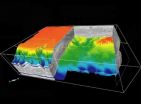Nearly 10 years after Andrea Yates killed her five children, the case remains hotly debated because of the critical legal questions it and other cases involving criminal insanity raise. At her first trial, Yates was convicted of capital murder. After her successful appeal, however, a second jury found that Yates' post-partum psychosis rendered her incapable of distinguishing between right and wrong when she murdered her children. She was then civilly committed to a high-security treatment facility—the usual consequence of a successful insanity-based acquittal.(1)
What role did Yates' severe post-partum psychosis play in the crime? Was she criminally responsible for the murders of her children given her mental illness? And, more broadly, how can we as a society successfully balance protecting our citizens from crimes while still protecting those with debilitating mental disorders? These are questions that go far beyond this one crime—and that many argue will be strongly influenced by future neuroscientific studies.
Personal Responsibility and the Law
Most Americans are familiar with one of the most basic concepts of our judicial system—the idea that every person is innocent until proven guilty. A finding of guilt requires that the prosecution prove the offense beyond a reasonable doubt. But even if that criterion is met, the defendant can still avoid conviction by establishing an affirmative defense of justification or excuse. In the former case, conduct that would otherwise be considered criminal is permissible under specific circumstances, like in cases of self-defense. In cases of excuse, the defendant may have acted criminally but is not considered a responsible agent because of infancy or legal insanity. If one examines the excusing conditions, it is clear that the capacity for rationality and, more controversially, the capacity for control are necessary for legal guilt. The important assumption underlying the ideal of only punishing blameworthy agents is that each person is a rational individual, able to differentiate right from wrong and take responsibility for his or her own actions. Demonstrating lack of rational capacity can be difficult, even in cases involving those suffering from an obvious and severe mental illness like Andrea Yates.
Consider murder, says Stephen J. Morse, a professor of law and professor of psychology and law in psychiatry at the University of Pennsylvania. The criteria for murder are an intentional killing act done with the purpose of killing the victim. For example, if the prosecution can prove beyond a reasonable doubt that an individual shot a person with the express intent of killing him or her, then the killer will be prima facie guilty of murder. If the individual is severely mentally ill, for example, and met the other requirements for legal insanity, such as not knowing right from wrong at the time of the crime, then he or she may be considered not guilty by reason of mental disease or defect.(2)
The M'Naghten Rules
In 1843, a Scottish laborer named Daniel M'Naghten tried to assassinate the British Prime Minister, Robert Peel, while in the throes of a paranoid delusion and instead killed Peel's secretary, Edward Drummond. This one act inspired Great Britain's House of Lords to establish the so-called M'Naghten Rules, guidelines for dealing with criminal defendants who are mentally incompetent in some manner. The questions at the heart of these rules are whether defendants know what they were doing when they committed the crime and if they knew it was wrong. If the answer to one or both is no, then a plea of not guilty by reason of insanity (or in more modern legal language, by reason of mental disease or defect) may be accepted by the judge or jury. But it is a difficult thing to prove.
"The rules have basically remained unchanged since the mid-nineteenth century," says the Honorable Matthew J. D'Emic, a judge who presides over the Brooklyn Mental Health Court in New York State. "And I think the reason for that is that it still holds up." The M'Naghten Rules remain the dominant test of rationality in the United States, but may be supplemented with control tests and other rules in some jurisdictions.
Though popular crime dramas on television suggest that insanity defenses are a dime a dozen, in reality, they are quite rare. "An insanity defense has to be proven by the defendant by a preponderance of the evidence," says D'Emic. "And it's a very difficult burden." In some jurisdictions, defense attorneys must demonstrate that defendants' mental conditions, at the moment of the crime, rendered them unable to know what they were doing or differentiate right from wrong. During Andrea Yates' first trial, the jury found her guilty of capital murder after hearing she had waited until her husband left for work to commit the crime, kenneled their dog and called the police—behavior which suggests she knew her acts were wrong.
"It was a very difficult case because everything turned on how broadly or narrowly the applicable insanity criteria were interpreted," says Morse. "Did Andrea Yates kill her children intentionally? Certainly. Did she know what she was doing? In a narrow sense, yes. But in the broader sense, she did not understand because her fundamental material reason for action, saving them from hell, was deluded."
Can Neuroscience Lessen the Burden?
Some hope that advances in neuroscience can help relieve some of the burden on defense attorneys representing mentally ill clients. For example, researchers are currently using neuroimaging and genetic techniques to better understand both the causes and progression of conditions like psychosis and psychopathy. In a fiercely debated case like that of Andrea Yates, it is hoped that a particular result on a genetic test or specific anomalies observed on a functional magnetic resonance imaging (fMRI) scan may one day help jurors better discern whether a defendant suffered from a particular condition—and perhaps even whether the defendant should be considered responsible for his or her actions.
The problem, however, is that neuroscience is not there yet. Though a brain scan may be able to one day support a diagnosis of a particular condition—the science is still too immature to do at present—it cannot offer evidence of a particular mental state.(3)(4)
"Neuroscientists say they are capturing mental states with various types of brain-imaging techniques," says Michael S. Gazzaniga, director, Sage Center for the Study of Mind at University of California, Santa Barbara. "We say we are learning to understand the neural mechanisms of a person intending to do something. But is that really true? Can you really recreate, at one point in time, what someone's intention might have been? We can't—at least not at this time."
But that's not to say that brain scans and other neuroscientific evidence will not be deemed permissible in future court rooms. Walter Sinnott-Armstrong, a neurophilosopher at Duke University's Kenan Institute for Ethics maintains that defendants should be able to—and likely soon will be able to—use scans demonstrating brain lesions and tumors in certain cases, even though they are only statistically associated with legally relevant cognitive disabilities.
"Courts allow boot prints, handwriting analyses and all kinds of other types of evidence that are a long way from proof. And neuroscience can work together with other sources to provide evidence of crucial mental states and conditions," he says. Yet, Martha J. Farah, director of the Center for Neuroscience and Society at the University of Pennsylvania, questions whether neuroimaging will ever be able to offer us anything more telling than the psychological assessments used today when it comes to intention.
"As it stands, legal questions of responsibility are based on folk psychological concepts of understanding, motivation, reasons, and incentives," she says. "The neuroscience won't supplant any of those folk psychological concepts. It's more likely that the neuroscience will eventually assist doctors and lawyers in determining how to apply these folk psychological concepts to a person by supplying evidence about their cognitive abilities and motivation states." It's often said that brains don't commit crimes—people do.5 And even if a brain scan can confirm a particular condition, it is unlikely that it would be able to give a strict yes or no answer regarding whether a defendant was responsible for an act.
"A major mistake that people make over and over again when thinking about criminal responsibility and neuroscience is that causation is an excusing condition. It's not," says Morse. "Neuroscience is just another part of the full causal explanation of human behavior. Just because a defendant has a cause that is not under his control does not mean he is not responsible for his crime. A person can suffer from a severe and persistent mental illness and yet still, under the law, be responsible for his actions because he does not meet the criteria for an excuse."
Moving Forward
Though neuroscientific results are currently considered more prejudicial than probative in the court room, Gazzaniga argues that, with time, the findings will become robust enough to be used in legal proceedings. What's more, he believes we need to start preparing for that day now.
So how can we as a society successfully balance protecting citizens from crimes while still protecting those with debilitating mental disorders? It's a tricky question. Joshua Buckholtz, an assistant professor at Harvard University who studies the neurogenetic architecture of psychopathology, says that, ultimately, it is a question for the law to decide.(6) He cautions, however, that making those decisions—and, as part of it, defining criminal responsibility as it pertains to those with mental disorders—requires an understanding of what neuroscience really has to offer.
"We need to do a much better job of educating people about what neuroscience is, including its methods and limitations," he says. "Judges' chambers are the crucible for this interaction between neuroscience and law. So, to the extent that we have judges who have better neuroscientific education, I think the better off we as a society will be."
Farah agrees. "There is no magic formula except to keep the channels of communication open," she says. "We need to make sure that scientists understand the legal relevance of what they're doing well enough to be able to constructively contribute to discussions about it. Make sure that lawyers understand the science well enough not to have too much naïve faith in it or be too suspicious of it. Working together is going to guide us towards the right integration of science and law."
###
(The Dana Foundation funds a grant to the AAAS to hold seminars for state and federal judges on emerging issues in neuroscience.)
References:
1 Keram EA. The Insanity Defense and Game Theory: Reflections on Texas v. Yates. Journal of the American Academy of Psychiatry and the Law. 2002, 30(4).
2 Morse SJ. Lost in Translation? An Essay on Law and Neuroscience. In Freeman M (Ed.) Law and Neuroscience: Current Legal Issues 2010. Oxford University Press.
3 Gazzaniga MS. Neuroscience in the Courtroom. Scientific American, April 2011.
4 The Law and Neuroscience Project: http://www.lawandneuroscienceproject.org
5 Morse SJ. Brain Overclaim Syndrome and Criminal Responsibility: A Diagnostic Note. Ohio State Journal of Criminal Law. 2006, 397(400).
6 Kiehl KA and Buckholtz JW. Inside of the Mind of a Psychopath. Scientific American Mind, September/October 2010.
END

